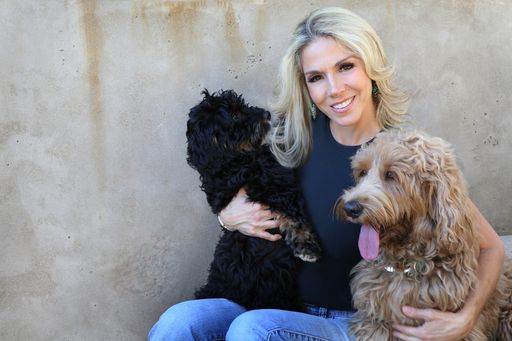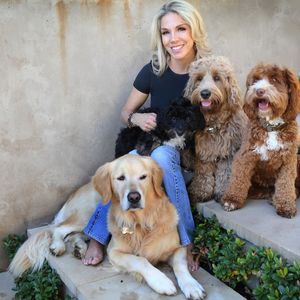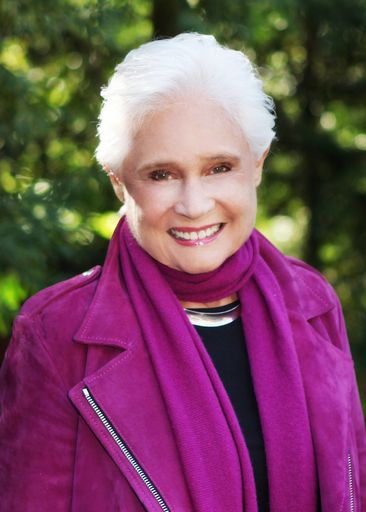
Sit, Stay, Love: Top Tips from a Dog Trainer to the Stars
You get a dog, and you get a dog, and you get a dog! If it feels like the biggest lifestyle trend of the 2020 pandemic is adding a new furry family member, you may be right. Across the country, demand for dogs to foster and integrate permanently into the household has been skyrocketing. Call it one of the unintended consequences of quarantine: The increased time at home and away from friends and loved ones = a heightened desire for companionship, and dogs are largely filling that void.
During this time, Tamar Geller, noted dog trainer and author of the New York Times Bestseller, The Loved Dog, has seen a "huge increase" in calls and inquiries for the type of coaching that has helped the dogs of Oprah Winfrey, Mark Wahlberg, and Tony Robbins, to name a few.
 Winfrey brought Tamar on her talk show, describing her as "a life coach for dogs and their people"—an apt description for someone who "teaches dogs to be the best version of themselves" instead of hammering standard obedience and commands. "A lot of people have been to other dog trainers before coming to me," says Geller. "Obedience training may have taught them to sit and stay, but they don’t have life skills."
Geller is currently meeting with select clients outside her Los Angeles home, or theirs, and readying an online program to help more people connect with their dogs. She spoke to us to outline "the six core needs for dogs" if they want to become well-mannered and achieve a great relationship with their "PAWrents."
1. Certainty—Dogs need a level of predictability and safety. They want to belong and know they’re safe and secure.
2. Uncertainty—Dogs also need variety. If I give you the same thing for breakfast, lunch, and dinner every day, you’re going to become bored. It’s the same for dogs. I worked with a dog in Malibu who was always running away. The PAWrents were very successful, very organized, and the dog was brilliant. But, any opportunity he had, he ran to the beach. He needed uncertainty (variety) and growth. They loved him, but like a dog. They didn’t realize he was more like a six-year-old human. We started teaching him games, challenges to solve, more words, and he stopped running away because his needs were being met. It had nothing to do with commands or obedience.
3. Love and connection—For some dogs, this might be even bigger than the need for certainty and safety. If you, as a person, have a need for love and connection, and your loved one is only talking to you once a week, your needs are not being met, so you’ll find a way to meet that need elsewhere. Dogs are the same.
4. Significance—All of us need to be seen. It’s true for people and for dogs. We want to be noticed for our efforts, for our accomplishments.
5. Physical exercise that involves sociability—Dogs needs physical exercise, but not just any physical exercise. If you put a dog on the treadmill, you’re not meeting their need. Set up play dates for them, go for a walk, go on a hike. There has to be a connection.
6. Growth—Nothing in life is stagnant. Grass is growing or it’s dying. Every tree, every bush, is growing or dying. It’s the same with business and relationships—they’re either growing or dying. Doing nothing is a guarantee that things won’t work out. You can increase your dog’s skills by challenging them with puzzles and fun games and teaching them new words. The biggest issue in (human) relationships is typically communication, and we speak the same language! I help dogs understand our human culture rules and understand English. I go with what science tells us, which is that the dog is way more brilliant than we think. Instead of expecting them to obey their master, let’s treat them with kindness, understanding, and compassion.
Winfrey brought Tamar on her talk show, describing her as "a life coach for dogs and their people"—an apt description for someone who "teaches dogs to be the best version of themselves" instead of hammering standard obedience and commands. "A lot of people have been to other dog trainers before coming to me," says Geller. "Obedience training may have taught them to sit and stay, but they don’t have life skills."
Geller is currently meeting with select clients outside her Los Angeles home, or theirs, and readying an online program to help more people connect with their dogs. She spoke to us to outline "the six core needs for dogs" if they want to become well-mannered and achieve a great relationship with their "PAWrents."
1. Certainty—Dogs need a level of predictability and safety. They want to belong and know they’re safe and secure.
2. Uncertainty—Dogs also need variety. If I give you the same thing for breakfast, lunch, and dinner every day, you’re going to become bored. It’s the same for dogs. I worked with a dog in Malibu who was always running away. The PAWrents were very successful, very organized, and the dog was brilliant. But, any opportunity he had, he ran to the beach. He needed uncertainty (variety) and growth. They loved him, but like a dog. They didn’t realize he was more like a six-year-old human. We started teaching him games, challenges to solve, more words, and he stopped running away because his needs were being met. It had nothing to do with commands or obedience.
3. Love and connection—For some dogs, this might be even bigger than the need for certainty and safety. If you, as a person, have a need for love and connection, and your loved one is only talking to you once a week, your needs are not being met, so you’ll find a way to meet that need elsewhere. Dogs are the same.
4. Significance—All of us need to be seen. It’s true for people and for dogs. We want to be noticed for our efforts, for our accomplishments.
5. Physical exercise that involves sociability—Dogs needs physical exercise, but not just any physical exercise. If you put a dog on the treadmill, you’re not meeting their need. Set up play dates for them, go for a walk, go on a hike. There has to be a connection.
6. Growth—Nothing in life is stagnant. Grass is growing or it’s dying. Every tree, every bush, is growing or dying. It’s the same with business and relationships—they’re either growing or dying. Doing nothing is a guarantee that things won’t work out. You can increase your dog’s skills by challenging them with puzzles and fun games and teaching them new words. The biggest issue in (human) relationships is typically communication, and we speak the same language! I help dogs understand our human culture rules and understand English. I go with what science tells us, which is that the dog is way more brilliant than we think. Instead of expecting them to obey their master, let’s treat them with kindness, understanding, and compassion.
SHARE





